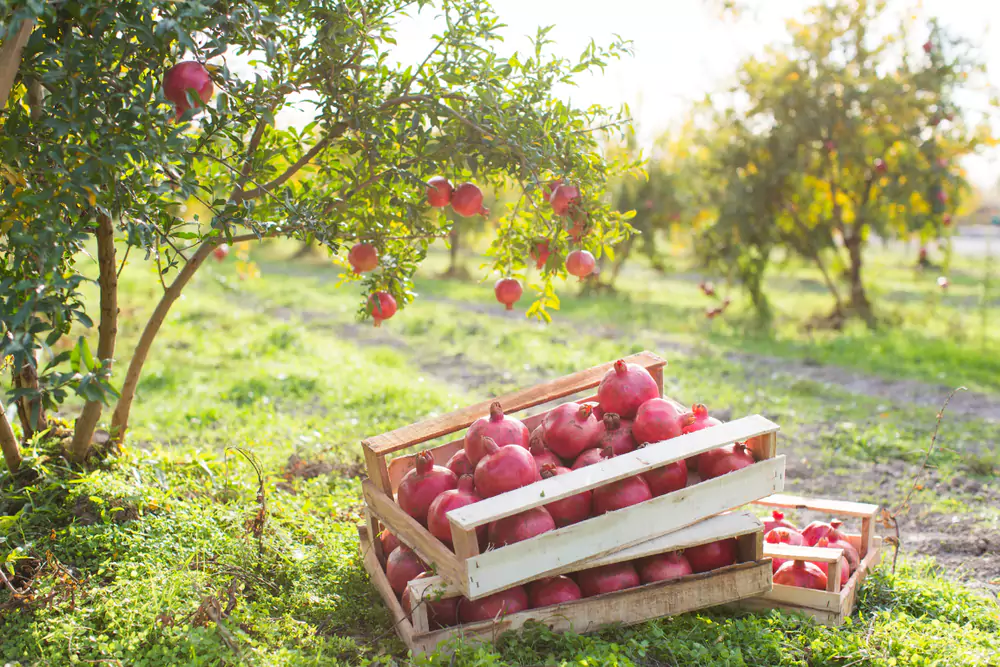Have you ever wondered, “What does pomegranate taste like?” It’s a common query that often stems from the delightful curiosity about this unique fruit. The main problem is that many people are unaware of which countries cultivate pomegranates, leaving them in the dark about its taste and benefits. The initial hurdle lies in not knowing where to find this exotic fruit and how to bring it into your daily life.
Living through this predicament myself, the key issues I faced revolved around the absence of information regarding which country boasts the best pomegranates, what its flavor profile entails, and the myriad health benefits it offers. Additionally, the challenge of discovering where to purchase these succulent gems intensified the mystery. The lack of clarity on these aspects created a barrier for me to fully appreciate the delicious and nutritious experience that pomegranates could offer.
However, there’s a simple solution to this conundrum. By sharing my personal experience and insights, I aim to shed light on the tasteful world of pomegranates. In the following paragraphs, we’ll embark on a journey to unravel the mysteries surrounding the taste, origin, benefits, and convenient ways to procure this delectable fruit.
So, let’s delve into the vibrant universe of pomegranates and discover the answers to the intriguing question: What does pomegranate actually taste like?
Also Read:How to make pomegranate Juice
What Is Pomegranate?
A pomegranate is a fruit that has been enjoyed for thousands of years for its unique taste and numerous health benefits. It is native to the region stretching from modern-day Iran to the Himalayan slopes in northern India. The pomegranate tree, scientifically known as Punica granatum, is an evergreen shrub that produces bright red or purple flowers and fruits.
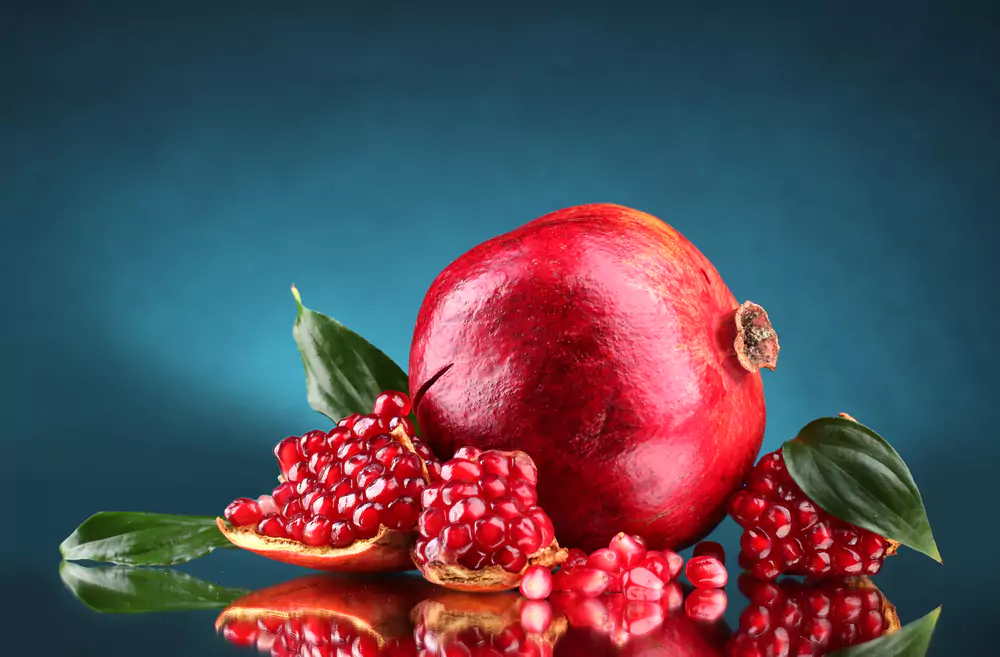
The pomegranate fruit has a leathery skin that covers a multitude of small seeds, known as arils, which are surrounded by a white, spongy layer. These seeds are the edible part of the fruit and are encased within the fruit’s outer skin. The seeds are encased in a tough membrane, which can be peeled off to reveal the sweet, juicy, and slightly tart arils.
Types Or Varieties Of Pomegranate
| Variety | Taste Description |
| Wonderful | Sweet, slightly tart, rich flavor |
| Hakuotu | Sweet, with a hint of acidity |
| Parfianka | Sweet, with a balance of tartness and acidity |
| Eversweet | Very sweet, low acidity |
| Ambrosia | Sweet, with a hint of berry flavor |
| Granada | Sweet, slightly tart, juicy |
What Does Pomegranate Taste Like?
In terms of taste, pomegranate is a versatile fruit that can be used in various forms, such as blueberry pomegranate, pomegranate molasses, pomegranate powder, pomegranate seeds, pomegranate vinaigrette, pomegranate sauce, pomegranate skin, pomegranate vinegar, and pomegranate cherry.
Each of these forms has a unique taste profile, which I will discuss below.
Blueberry Pomegranate Taste
This combination of flavors creates a sweet and tangy taste, with the blueberry providing a fruity sweetness and the pomegranate offering a tartness that balances out the overall taste.
Pomegranate Molasses Taste
This thick, syrupy molasses has a strong, tangy flavor with notes of sweetness and a hint of bitterness. It is often used as a glaze or drizzle, adding a unique and complex taste to dishes.
Pomegranate Powder Taste
The powdered form of pomegranate has a subtle, sweet-tart flavor with a hint of earthiness. It can be used as a natural colorant and flavor enhancer in various recipes.
Pomegranate Seeds Taste
The seeds, also known as arils, have a juicy, crunchy texture and a sweet-tart taste that is reminiscent of raspberries or cranberries. They can be eaten on their own or used in salads, smoothies, and other dishes.
Pomegranate Vinaigrette Taste
This dressing has a tangy, fruity flavor with a hint of sweetness. The pomegranate juice adds a unique twist to traditional vinaigrettes, making it a popular choice for salad dressings and marinades.
Pomegranate Sauce Taste
The sauce has a thick, rich consistency and a sweet-tart taste, with a hint of acidity. It is often used as a glaze or drizzle on meats, seafood, and vegetables.
Pomegranate Skin Taste
The skin of the pomegranate has a slightly bitter and astringent taste, but it is not commonly consumed due to its tough texture.
Pomegranate Vinegar Taste
This vinegar has a robust, tangy flavor with a hint of sweetness. It can be used in salad dressings, marinades, and as a flavor enhancer for various dishes.
Pomegranate Cherry Taste
Combining the flavors of pomegranate and cherry creates a fruity, sweet taste with a hint of tartness. This combination can be used in various recipes, such as smoothies, jams, and sauces.
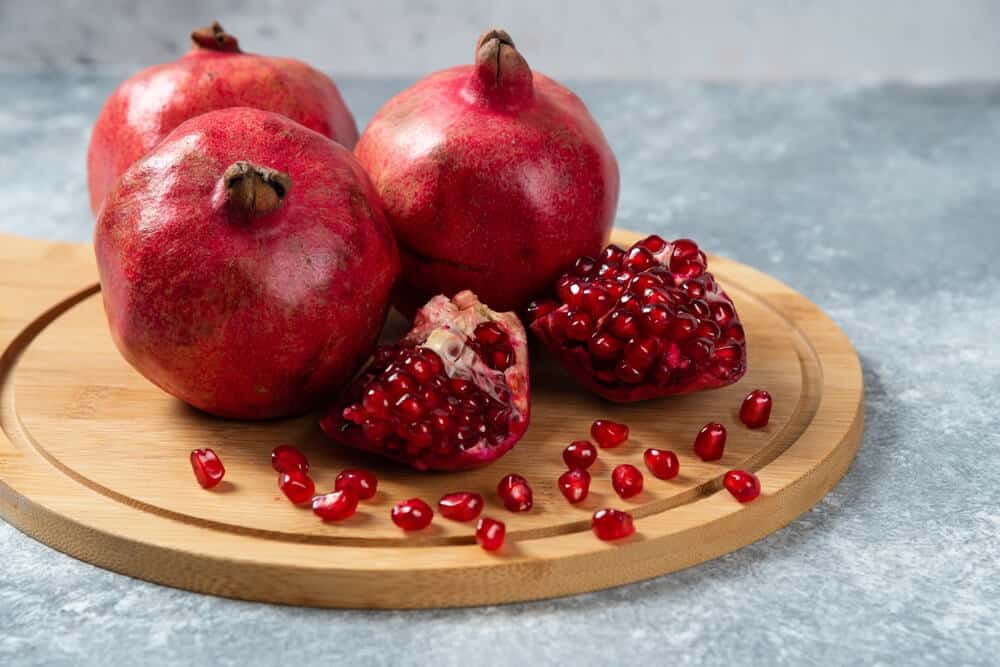
Where Can You Buy Pomegranate?
Buying them is a major concern because pomegranates are not always readily available in local grocery stores. When it comes to purchasing pomegranates, there are a few different places you can go. Here are some options:
Local Grocery Stores
Many larger grocery stores carry fresh pomegranates in their produce section. You can usually find them near other fruits like apples and oranges. Keep in mind that the availability of pomegranates may vary depending on the season.
Farmers Markets
Farmers markets are a great place to find fresh, locally-grown pomegranates. These markets typically have a variety of fruits and vegetables, and you can often speak directly with the farmer to learn more about the pomegranates’ origin and quality.
Online Retailers
If you’re having trouble finding fresh pomegranates in your area, you can always try buying them online. Websites like Amazon or specialty fruit delivery services may have pomegranates available for purchase. Just be sure to read reviews and research the seller to ensure you’re getting a good product.
Specialty Food Stores
Some specialty food stores, such as gourmet markets or health food stores, may carry pomegranates. These stores often have a wider selection of fruits and other unique items that may be difficult to find elsewhere.
Import Shops
If you’re traveling in a country where pomegranates are native, like Turkey or the Middle East, you might find them at import shops that specialize in bringing exotic foods to your area.
3 Recipes Using Pomegranates
Ever wondered how to make use of those delicious pomegranate seeds in your recipes? Pomegranates are not only a delightful addition to your meals but also a nutritious one.
Here, I will share three recipes using pomegranates that you can try at home.
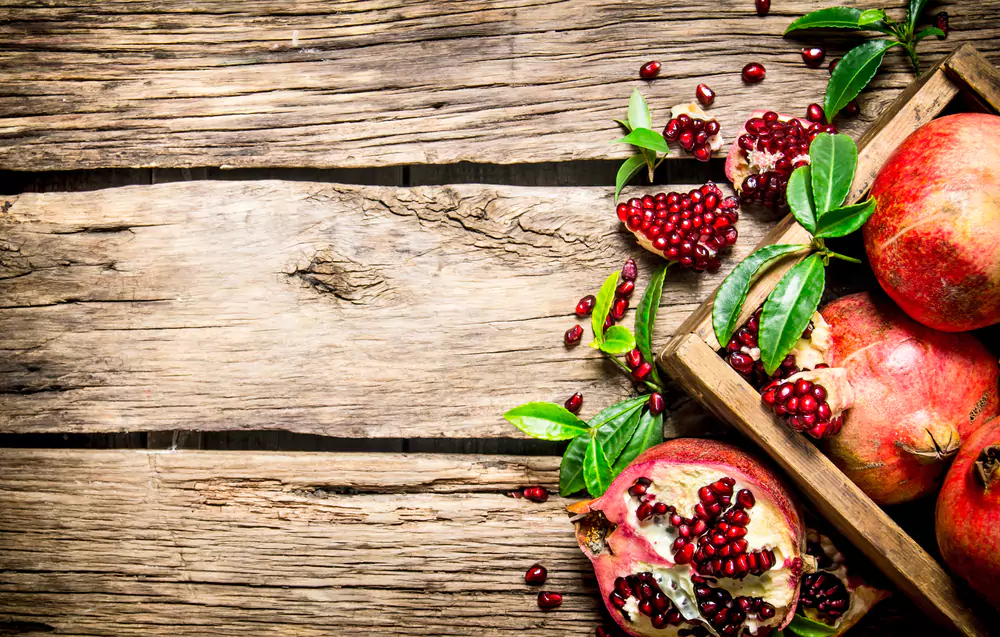
Pomegranate Glazed Chicken
Ingredients:
- 4 chicken breasts
- 1 cup pomegranate juice
- 1/4 cup soy sauce
- 1/4 cup brown sugar
- 2 cloves garlic, minced
- 1 teaspoon grated fresh ginger
- 1/2 teaspoon ground cinnamon
- 1/4 teaspoon red pepper flakes
- Salt and pepper, to taste
- 1 pomegranate, seeds removed
Instructions:
- In a small saucepan, combine the pomegranate juice, soy sauce, brown sugar, garlic, ginger, cinnamon, and red pepper flakes. Bring the mixture to a boil, then reduce the heat and let it simmer for 10 minutes, stirring occasionally, until it thickens slightly.
- Season the chicken breasts with salt and pepper.
- Preheat a grill or grill pan to medium-high heat. Grill the chicken breasts for about 5-7 minutes per side, or until cooked through.
- Brush the glaze on both sides of the chicken breasts during the last few minutes of cooking.
- Once the chicken is cooked, remove it from the grill and let it rest for a few minutes.
- Serve the chicken with the remaining glaze and a sprinkle of pomegranate seeds.
- This recipe combines the sweet and tangy flavors of pomegranate with the savory taste of chicken, making for a delicious and unique meal.
Pomegranate And Goat Cheese Salad
Ingredients:
- 6 cups mixed greens
- 1/2 cup pomegranate seeds
- 1/4 cup walnuts, toasted
- 1/4 cup crumbled goat cheese
- 1/4 cup pomegranate molasses (found in specialty food stores)
- 2 tablespoons extra-virgin olive oil
- 1 tablespoon balsamic vinegar
- Salt and pepper, to taste
Instructions:
- In a large salad bowl, combine the mixed greens, pomegranate seeds, walnuts, and goat cheese.
- In a small bowl, whisk together the pomegranate molasses, olive oil, balsamic vinegar, salt, and pepper.
- Drizzle the dressing over the salad and toss to coat evenly.
- Serve immediately.
- This salad is a perfect balance of sweet, tangy, and creamy flavors, making it a delightful and healthy choice for any meal.
Pomegranate and White Chocolate Mousse
Ingredients:
- 1 cup pomegranate seeds
- 1/2 cup white chocolate, chopped
- 1 cup heavy cream
- 1 teaspoon vanilla extract
- 1/4 cup granulated sugar
- 1/2 teaspoon unflavored gelatin
- 2 tablespoons cold water
Instructions:
- In a small saucepan, combine the pomegranate seeds and white chocolate. Cook over low heat, stirring constantly, until the white chocolate is melted and the mixture is smooth.
- Remove from heat and let cool slightly.
- In a large bowl, whip the heavy cream with the vanilla extract until soft peaks form.
- In a separate bowl, dissolve the gelatin in the cold water and let it sit for about 5 minutes.
- Microwave the gelatin mixture for 10-15 seconds, or until it becomes liquid.
- Slowly pour the gelatin into the pomegranate mixture while continuously whisking.
- Gradually fold the pomegranate mixture into the whipped cream, being careful not to deflate the cream.
- Spoon the mousse into individual serving dishes and refrigerate for at least 2 hours before serving.
Culinary Uses Of Pomegranates
When it comes to pomegranates, I have found that they are incredibly versatile and can be used in a variety of culinary applications. Here are three of my favorite ways to use pomegranates in cooking:
Pomegranate Molasses
One of the most popular uses of pomegranates in cooking is to make pomegranate molasses. This thick, tangy syrup adds a unique flavor to both sweet and savory dishes. I personally enjoy using pomegranate molasses as a glaze for roasted meats, such as chicken or lamb. The sweet and tart flavor of the molasses caramelizes beautifully on the meat, creating a delicious and visually stunning dish. Additionally, pomegranate molasses can be used in salad dressings, marinades, and even desserts like drizzling it over ice cream or yogurt.
Pomegranate Seeds in Salads
Pomegranate seeds are not only visually appealing with their vibrant red color, but they also add a delightful burst of sweetness and tartness to salads. I love adding pomegranate seeds to my salads for a refreshing and juicy element. They pair wonderfully with bitter greens like arugula or kale, as well as creamy cheeses such as feta or goat cheese. The combination of textures and flavors makes for a truly satisfying salad experience.
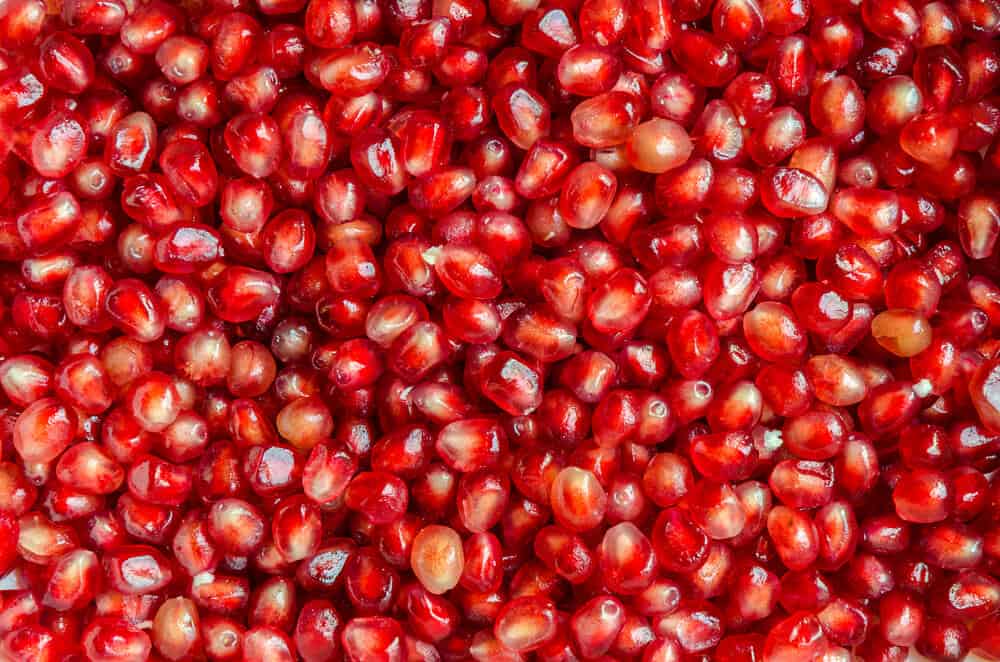
Pomegranate Juice in Cocktails
Pomegranate juice is a fantastic addition to cocktails, providing a rich and fruity base for mixed drinks. Personally, I enjoy using pomegranate juice in cocktails such as martinis or margaritas. Its deep red color adds an elegant touch to the drinks, while its sweet and slightly tart taste balances well with other cocktail ingredients. Pomegranate juice can also be used to create non-alcoholic beverages like mocktails or refreshing spritzers.
Pomegranate Benefits
In terms of benefits, pomegranates offer a plethora of health advantages. Here are five pomegranate benefits:
Antioxidant properties
Pomegranates are rich in antioxidants, which help protect the body from harmful free radicals. These antioxidants, specifically punicalagins and ellagitannins, are more potent than those found in green tea and red wine.
Heart health
Pomegranate juice has been shown to lower bad cholesterol (LDL) levels and increase good cholesterol (HDL) levels, reducing the risk of heart disease. It also helps lower blood pressure, making it a heart-healthy fruit.
Anti-inflammatory effects
Pomegranates contain anti-inflammatory properties that can help reduce inflammation in the body. This can be beneficial for those suffering from arthritis or other inflammatory conditions.
Immune system support
The vitamin C content in pomegranates helps boost the immune system, protecting the body from various infections and diseases.
Cancer prevention
Some studies suggest that pomegranate extracts may help prevent the growth of cancer cells. The antioxidants and anti-inflammatory properties found in pomegranates may also contribute to a reduced risk of certain cancers.
Eating Pomegranate Seeds Side Effects
Other than benefits, eating pomegranate seeds can have some side effects. Here are three side effects:
Allergic reactions
Some people may experience an allergic reaction to pomegranate seeds, which can cause symptoms like itching, swelling, and difficulty breathing. If you have a known allergy to pomegranates or related fruits, it’s essential to avoid consuming them.
Stomach discomfort
Eating a large quantity of pomegranate seeds may cause stomach discomfort, bloating, or gas due to their high fiber content. It’s essential to consume them in moderation and gradually increase the intake to avoid any discomfort.
Tooth staining
Pomegranate seeds contain natural pigments that may stain your teeth over time. While this side effect is not harmful, it can be aesthetically displeasing. Rinsing your mouth with water or brushing your teeth after consuming pomegranate seeds can help minimize this issue.
Pomegranate Benefits For Female
Do you know that pomegranates offer several benefits for females? Here are three key benefits I’ve experienced:
Rich in Antioxidants
Pomegranates are packed with antioxidants, which can help protect the body from oxidative stress and reduce the risk of chronic diseases. Personally, I’ve noticed improved skin health and a reduction in signs of aging after incorporating pomegranate into my diet.
Heart Health
Consuming pomegranate may support heart health by improving cholesterol levels and lowering blood pressure. I have found that including pomegranate in my diet has helped me maintain a healthy heart and improve my overall cardiovascular well-being.
Potential Hormonal Balance
Some studies suggest that pomegranate may have a positive impact on hormonal balance in females. Personally, I’ve noticed reduced menstrual cramps and more regular menstrual cycles after consuming pomegranate regularly.
How To Cook A Pomegranate?
Have you ever wondered how to cook a pomegranate? It’s a delicious and nutritious fruit that can be easily incorporated into various dishes. Here’s a simple guide to help you cook a pomegranate.
Step 1: Preparing the Pomegranate
First, gather your ingredients and tools. You will need a pomegranate, a sharp knife, a cutting board, a large bowl of water, and a colander. Begin by cutting the pomegranate in half along its equator. This will make it easier to access the seeds (also known as arils) inside.
Step 2: Removing the Seeds
Hold one half of the pomegranate over the large bowl of water, cut-side facing down. Use your fingers to gently tap the pomegranate, causing the seeds to fall into the water. The pomegranate skin, membrane, and any white pith will sink to the bottom of the bowl, while the seeds will float to the top.
Step 3: Straining the Seeds
Using a colander, carefully strain the seeds from the water. You may need to use your fingers to help separate the seeds from any remaining pomegranate membrane. Once the seeds are separated, rinse them under cold water to remove any remaining debris.
Step 4: Storing the Cooked Pomegranate Seeds
To store the cooked pomegranate seeds, spread them out on a clean kitchen towel or paper towel. Pat them dry with another towel, and then transfer them to an airtight container. Store the container in the refrigerator for up to three days.
Pomegranate Nutrition
| Nutrient | Amount |
| Calories | 83 |
| Protein | 1.7g |
| Fat | 1.2g |
| Carbohydrates | 18.7g |
| Fiber | 4g |
| Sugar | 13.7g |
| Vitamin C | 10.2mg |
| Vitamin K | 16.4mcg |
| Folate | 38 mcg |
| Potassium | 236mg |
Interesting Facts About Pomegranate
Do you know that pomegranates are not only delicious but also offer numerous health benefits? They have been consumed for thousands of years and are mentioned in various ancient texts. Here are two interesting facts about pomegranates that you may not have known:
Fact 1: Pomegranates are nutritional powerhouses
Pomegranates are packed with vitamins and minerals, such as vitamin C, vitamin K, potassium, and folic acid. They also contain a variety of antioxidants, including punicalagins and punicic acid, which have been shown to have numerous health benefits. For example, pomegranates have been found to help lower blood pressure, improve heart health, and potentially slow the growth of cancer cells.
Fact 2: Pomegranates have a long history in traditional medicine
Pomegranates have been used in traditional medicine for thousands of years. In ancient Persian, Greek, and Roman cultures, pomegranates were believed to have medicinal properties. They were used to treat a variety of ailments, including digestive issues, skin conditions, and even fertility problems.
5 Best Substitutes For Pomegranates
For some reasons, if you are unable to find pomegranates, there are several alternatives that can be used in their place. As someone who loves experimenting with different ingredients in my cooking, I have found that the following substitutes work well:

Cranberries
Cranberries are a great substitute for pomegranates due to their similar tartness and flavor profile. They can be used in both sweet and savory dishes, and their vibrant color adds a pop to any recipe. Whether used fresh, dried, or as juice, cranberries can provide a similar taste experience to pomegranates.
Red Currants
Red currants are another excellent alternative to pomegranates. They have a slightly tart flavor and a similar juicy texture, making them suitable for use in salads, sauces, and desserts. Their bright red color also makes them visually appealing as a garnish or ingredient in various dishes.
Blackberries
While blackberries have a slightly different flavor profile compared to pomegranates, they can still be used as a substitute in certain recipes. Their sweet-tart taste and juicy texture make them a good option for adding complexity to dishes where pomegranates are called for.
Why Does Pomegranate Taste Like Nail Polish?
I’ve noticed that sometimes the taste of pomegranate can remind me of the smell of nail polish. It’s not a strong resemblance, but there’s a subtle similarity in the background. The sweetness of the pomegranate has this hint that’s a bit like the scent of nail polish remover. It’s not unpleasant, just a quirky note that adds a touch of uniqueness to the overall flavor. Despite this, the natural sweetness and juiciness of the pomegranate seeds still shine through, making it an interesting and tasty experience.
Do Pomegranates Taste Like Alcohol?
No, pomegranates don’t exactly taste like alcohol, but there’s this subtle connection. When you bite into the juicy seeds, there’s a faint resemblance to the way alcohol can have a hint of sweetness. It’s not the same, of course, but there’s this underlying similarity in the background. The natural sweetness of the pomegranate manages to shine through, making it a tasty and unique flavor without being overpowering. It’s like a distant cousin to the sweetness you might find in certain drinks, creating a distinctive taste that’s both enjoyable and interesting.
Do Pomegranate Seeds Taste Like Acetone?
Well, no, pomegranate seeds don’t taste like acetone, but there’s this faint, peculiar hint that’s somewhat reminiscent. When you crunch into the seeds, there’s a subtle note in the background that vaguely echoes the smell of acetone. It’s not a strong resemblance, and the overall taste is more sweet and juicy, but that subtle hint adds an interesting twist. It’s like a tiny, quirky surprise in the midst of the delicious burst of pomegranate flavor, making it a unique and enjoyable experience.
Does Pomegranate Taste Like Cranberry?
Pomegranate doesn’t taste exactly like cranberry, but they share a kindred sweetness. Imagine the burst of juice from pomegranate seeds – it’s sweet and a bit tangy, a flavor dance on your tongue. Cranberries, on the other hand, have a similar tartness but with a slightly different vibe. While pomegranate feels like a fruity celebration, cranberry brings its own zesty twist. Both are delicious in their unique ways, each offering a taste adventure that’s a bit distinct from the other.
Conclusion
In conclusion, the taste of pomegranate is a unique and complex experience that can be both sweet and tangy. It has a slight crunch and a fresh, fruity flavor that is often compared to that of a mix of raspberries, strawberries, and cherries. The tartness is what sets pomegranate apart from other fruits, giving it a distinct and memorable taste.
References
National Center for Biotechnology Information (NCBI). Pomegranate juice decreases amyloid load and improves behavior in a mouse model of Alzheimer’s disease [Internet]. [cited 2023 Jul 21]. Available from: https://www.ncbi.nlm.nih.gov/pubmed/17010630
National Center for Biotechnology Information (NCBI). Anaphylactic reactions to pomegranate: identification and characterization of eliciting IgE-reactive components [Internet]. [cited 2023 Jul 21]. Available from: https://www.ncbi.nlm.nih.gov/pmc/articles/PMC3354222
American Heart Association. How Potassium Can Help Control High Blood Pressure [Internet]. [cited 2023 Jul 21]. Available from: https://www.heart.org/en/health-topics/high-blood-pressure/changes-you-can-make-to-manage-high-blood-pressure/how-potassium-can-help-control-high-blood-pressure
National Center for Biotechnology Information (NCBI). Potential Mechanisms of the Improvement of Glucose Homeostasis in Type 2 Diabetes by Pomegranate Juice – PMC [Internet]. [cited 2023 Jul 21]. Available from: https://www.ncbi.nlm.nih.gov/pmc/articles/PMC8945221
Verma A, Toshi N, Kumar S, Vaksh S, Pandey M, Evaluation of healing effects of Punica granatum peel on acetic acid induced colitis. J Community Health Manag 2016;3(4):172-177
